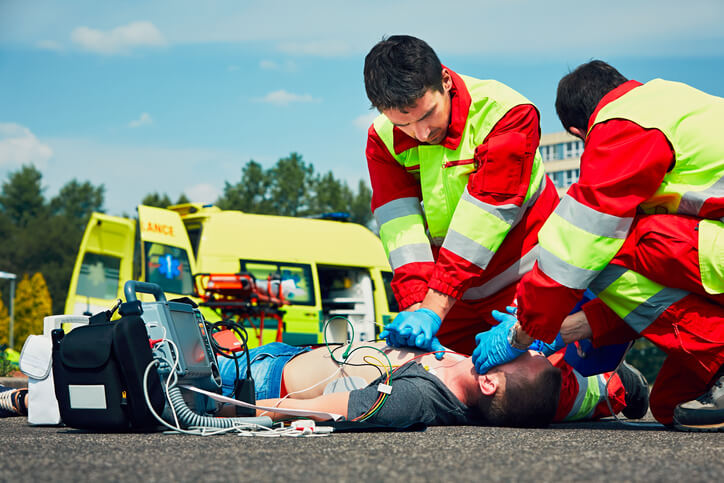
Airway obstruction can be one of the most intensive calls that requires a response from you, the rescuer. Few emergencies require such decisive, immediate action as an obstructed airway. You must recognize the signs, decide on an appropriate course of action, and treat effectively so the obstruction can be relieved and airway patency restored.
Like any medical emergency, responding to an airway obstruction requires knowledge, training, preplanning, and the right equipment. So, when it comes to airway obstructions, are you prepared?
Airway obstruction affects people of all ages, although children are more prone to obstruction than adults. In fact, according to the American Academy of Pediatrics, choking is "a leading cause of injury among children," and is especially lethal in those younger than four years of age.¹
But that doesn't mean adults are not at risk, especially the elderly. The National Safety Council reports that out of the 5,051 choking-related deaths in 2015, 2,848 victims were over the age of 74.²
Let's examine some of the factors that render these two populations—children and seniors—especially susceptible to choking deaths, and ways you can be prepared for either scenario.
Unique Physical Attributes of Children
There are reasons children are more susceptible to choking than adults, and it's not just due to their inability to recognize choking threats. It is mostly due to their unique anatomy, which is not only smaller, but poses challenges when it comes to treating and correcting a foreign body obstruction.
Some of the unique anatomical features of children that can either lead to foreign body obstruction or hamper rescue efforts include:
- A larger tongue in infants and young children
- A larger, floppier epiglottis
- A shorter, narrower trachea
- Larger tonsils and adenoids
- A higher larynx
- A larger occiput
These features place children at risk for choking, since objects (such as food, toys, or coins) can become easily lodged in their airways, and require special consideration when attempting to remove an obstruction; for instance, think about head and airway alignment with the larger occiput.
Children also have specific physiological attributes that place them at risk for respiratory emergencies. These include:³
- Smaller tidal volumes—Infants and young children have small, relatively fixed tidal volumes relative to body size (6 to 8 mL/kg). Thus, they are susceptible to barotrauma from aggressive positive pressure ventilation.
- Higher oxygen metabolism—Infants have a higher metabolic rate and consume oxygen at twice the rate of adults (6 versus 3 mL/kg/min).
- Prone to respiratory fatigue—Infants and younger children have a lower percentage of efficient, slow-twitch (type 1) skeletal muscle fibers in their intercostal muscles than older patients. Therefore they are more prone to fatigue, and ultimately, respiratory failure.
As a rescuer, you must be prepared to treat the pediatric choking victim. By maintaining a high index of suspicion and considering their unique anatomical and physiological attributes, you will be better positioned to treat and correct foreign body obstruction in children.
Choking and the Geriatric Patient
Like children, the elderly are at special risk of choking. Several potential factors may predispose older people to airway obstruction, including:
- Prior stroke, which may leave the individual physically or mentally impaired
- Advanced dementia
- Inability to effectively swallow
- Loss of teeth, and inability to chew food properly
- Loose dental hardware that can become lodged in the airway
- Lack of saliva that can cause food to stick in the throat
- Parkinson's Disease
These factors put the elderly at risk for airway obstruction, so you must remain alert when responding to seniors in distress.
Certain precautions must be taken when treating airway obstruction in the elderly, especially when ventilating, intubating, or suctioning. These include:
- Delicate oral tissues that can bleed profusely if traumatized, especially for patients on blood thinners
- Lack of teeth that can create difficulties when obtaining an adequate mask seal(leave dentures in place when bagging)
- Patient positioning, which can be complicated due to spinal kyphosis, making it impossible to lay the patient flat
Considering these factors will enable you to treat the geriatric choking victim more efficiently and effectively.
Treating airway obstruction is always a challenge, especially in the very young or very old. But knowing the risks and being attuned to their special attributes can help prepare you for treating airway obstruction, regardless of the age of the patient.















